The Daughters of Bilitis (DOB) was the United States' first lesbian civil and political rights organization. It was formed in 1955 and began as a social alternative to bars that were the target of common police attacks. At a time when same-sex dancing in public was a crime, the DOB provided an alternative not only for meetings and dancing, but also for educating lesbians about their rights and history. With a remarkable history, the DOB paved the way for the formation of other gay organizations.
History
A homophobic government
After World War II, anti-communist sentiments quickly became associated with the personalities of those who worked for the government. Members of some 'subversive' groups were required to provide their registration information to Congress. In 1950, the Ministry of Foreign Affairs announced that homosexuals were a security risk, and then several repressive actions were adopted. This included the dismissal of government employees (federal, state and local) who were suspected of being gay, police attacks on gay bars in the United States and Canada and laws banning cross-dressing for women and men. In San Francisco, police began targeting their raids specifically at lesbian bars, such as Adler and Tommy's Place, both of which were raided on September 8. th , 1954. And it was in San Francisco that Daughters of Bilitis was formed.
Birth of a group
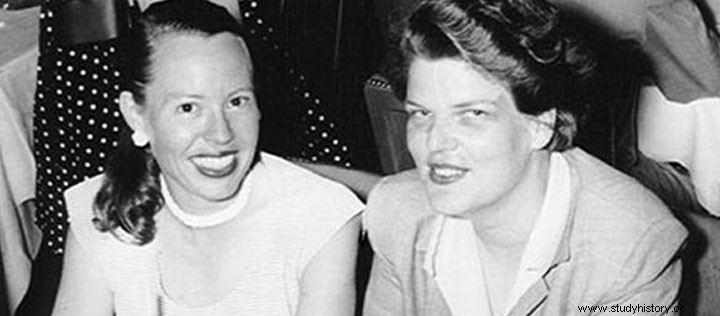
In 1955, Del Martin and Phyllis Lyon, a couple who had been together for three years, complained to a gay male couple that they did not know any other lesbians. The couple introduced them to another lesbian couple- Rosalie 'Rose' Bamberger and Rosemary Sliepen. It was Rose who suggested setting up a social club. Then, on September 21, 1955, the four women met at Rose and Rosemary's home. The first meeting was attended by the two couples mentioned, and two more - Marcia Foster and partner June, and Noni Frey and partner Mary.
One of the priorities of the founding members was that they needed a place to dance, as dancing with the same sex in public was against the law. Apart from this, women needed not only privacy from the watchful eyes of the police, but also from their own parents and families. In bars, tourists would yawn at them. Meetings were held regularly. When the realization hit, they decided to organize themselves in a group with clear goals. Del Martin was elected president. Their focus was on educating women about lesbians and destroying the self-loathing that was the result of social oppression.
What's in a name?
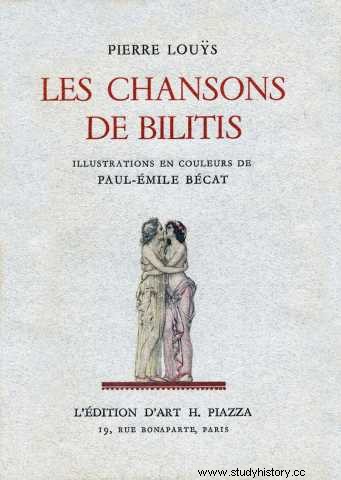
The name of the club was decided during the second meeting. In 1894, the French poet Pierre Lous published his work Sangene om bilitt. Bilitis was the name of a fictional lesbian character who lived on the island of Lesbos with Sappho. The name was chosen because it gave the group anonymity - most did not know what it meant. 'Daughters' was added to join other American social associations, such as the Daughters of the American Revolution. According to Martin and Lyon, if anyone asked, they could always claim that it was a poetry club. One needle was designed to identify others. Club colors were selected. The club's motto was the French word 'Qui vive', which meant 'on standby'. The early members of the DOB followed what they thought were conflicting approaches - they had to recruit potential members, while remaining secretive. In 1957, the club submitted a charter for non-profit company status. The description that was written was so vague that according to Lyon it could have been a charter for a club that raises cats.
Ladder
Within a year the club was formed, most of the original participants were no longer members of the group. But the number of members had increased to 16. The members wanted the group to be more than just a social alternative to bars. When the DOB was formed, some of the original participants who belonged to the working class did not feel that it would be wise to go public. These members eventually left the group and formed two secret groups for gays - Quatrefoil and Hale Aikane. The fear of going public came from the shame they felt about their sexual desires. This was only driven by socially oppressive circumstances.
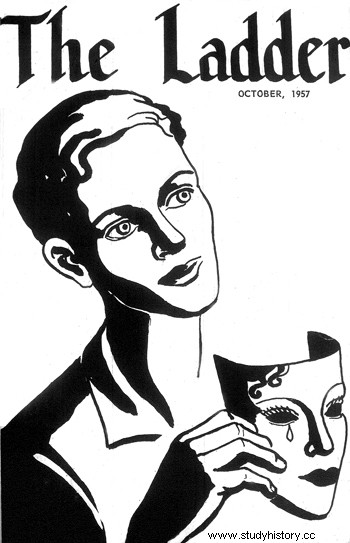
Shortly after the DOB was formed, the club's mission statement was written. It was based on Martin and Lyon's problem as a couple's lack of information on female homosexuality. Since the club was not allowed to advertise its meetings in local newspapers, Martin and Lyon used their journalistic backgrounds to print a newsletter. This was then distributed to as many women as the members knew. The newsletter became "The Ladder" in October 1956. It was the first nationally distributed lesbian publication in the United States. It was also one of the first newsletters to publish statistics on lesbians. Surveys were sent to readers in 1958 and then in 1964. Lyon was the editor of The Ladder.
DOB's advertisement was 'A women's organization with the aim of promoting the integration of gays in society.' The statement, composed of four parts, prioritizes the club's purpose. Until 1970, it was printed on the front page of every issue of the newsletter. The main part of the purposes included
- Educate the "variant" (During these times, the term "variant" was used instead of lesbian. "Lesbian" had extremely negative connotations at the time) and enabled her to understand herself. Sponsored public discussions were to be led by leading members of religious, psychiatric and other professions.
- Educating the public, which would eventually lead to a breakdown of prejudices and taboos.
- Furthermore, increase knowledge about homosexuality through the participation of authorized and responsible psychologists, sociologists and other experts in research projects.
- Examines criminal law on homosexuality and proposes and promotes the required changes.
Four years after the formation of the DOB, chapters in the club were formed in New York City, Chicago, Los Angeles and Rhode Island. When they came to a meeting, the participants would be met at the door by other participants. In order to show good faith, names will be exchanged, while it was mentioned that real names do not need to be revealed.
Methods
The gay movement (as the early gay rights movement was then called) was centered around the Mattachine Society, founded in 1950. The Mattachine Society was one of the earliest gay organizations in the United States. In the early stages of the association, they fought for change. But convincing the heterosexual community that homosexuals were no different from heterosexuals seemed to be more careful and productive for the leaders of the community. Then in 1953 they changed tactics. DOB followed this example. Members were encouraged to assimilate into the existing heterosexual culture.
This was seen in the debate about the right thing to do with slaughter and femme dress and role-playing. In 1955, a rule was introduced that women who attended meetings, if they wanted trousers, should wear women's trousers. However, the rule was not followed mostly because those who participated wore jeans. The only jeans available during the 1950s were men. If women who wore men's clothing were persuaded to dress in 'feminine' clothes, it was seen as a great victory.
'Sex deviates'
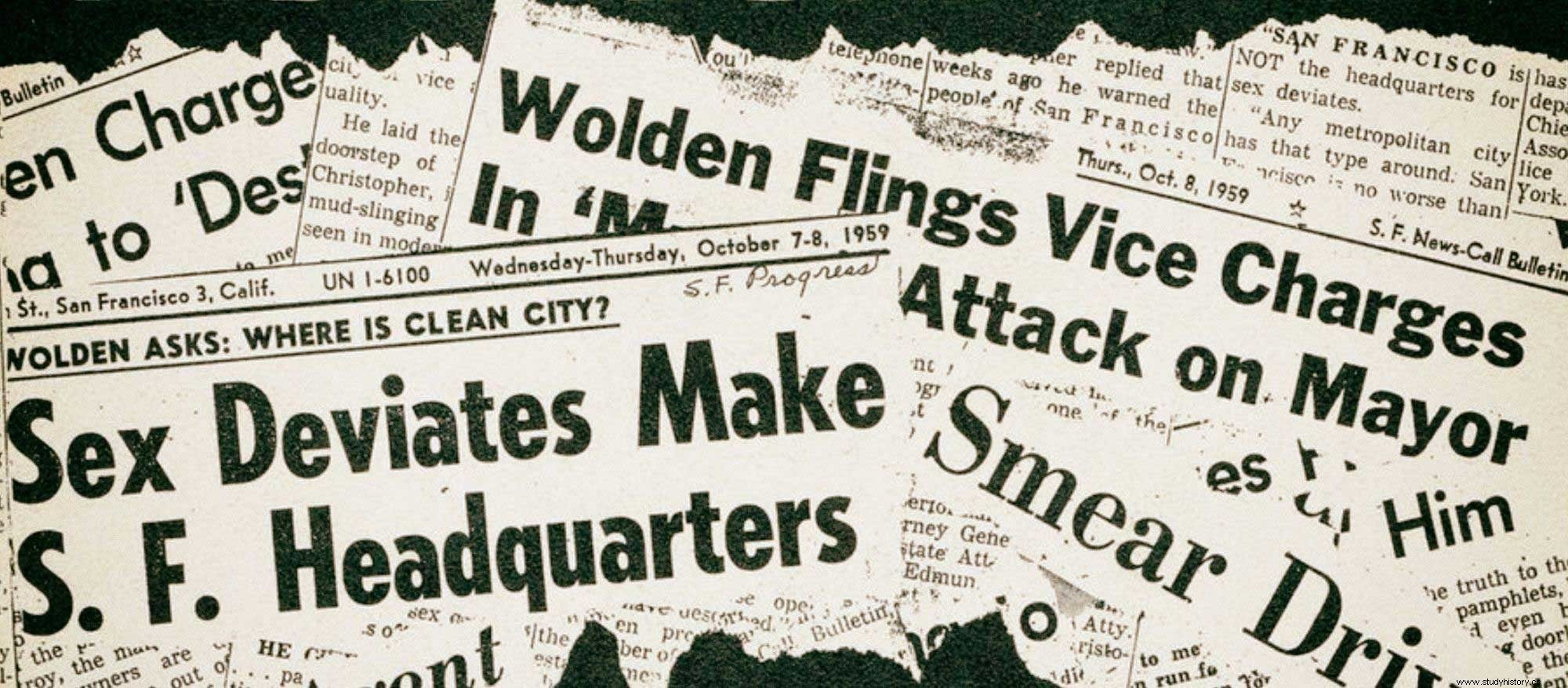
In 1959, the DOB was used as political fodder during the San Francisco mayoral race. Russell Wolden, when he challenged his rival George Christopher, distributed information claiming that Christopher made the city a safe place for 'sex deviation'. Wolden was responsible for releasing materials that stated that parents who had daughters and no sons should not be relieved, as there were lesbian organizations composed of gay women, namely Diliters of Bilitis. At the time, DOB retained only two copies of The Ladder's subscription list. This was a deliberate attempt to prevent the list from falling into the hands of those who could use it against the subscribers. The list was moved from the club's headquarters, and then the city police hit the office.
National Conventions
DOB held its first convention in San Francisco in 1960. Local radio and newspapers were notified of the convention via press releases. This prompted columnist San Francisco Chronicle Herb Caen to announce the convention and take a jab at Russell Wolden, calling the DOB the female colleagues in the Mattachine Society. The conference was attended by two hundred women. San Francisco police arrived to check if any of the members were wearing men's clothing. They were brought in by Del Martin himself to show that all the women were wearing dresses, complete with heels and stockings.
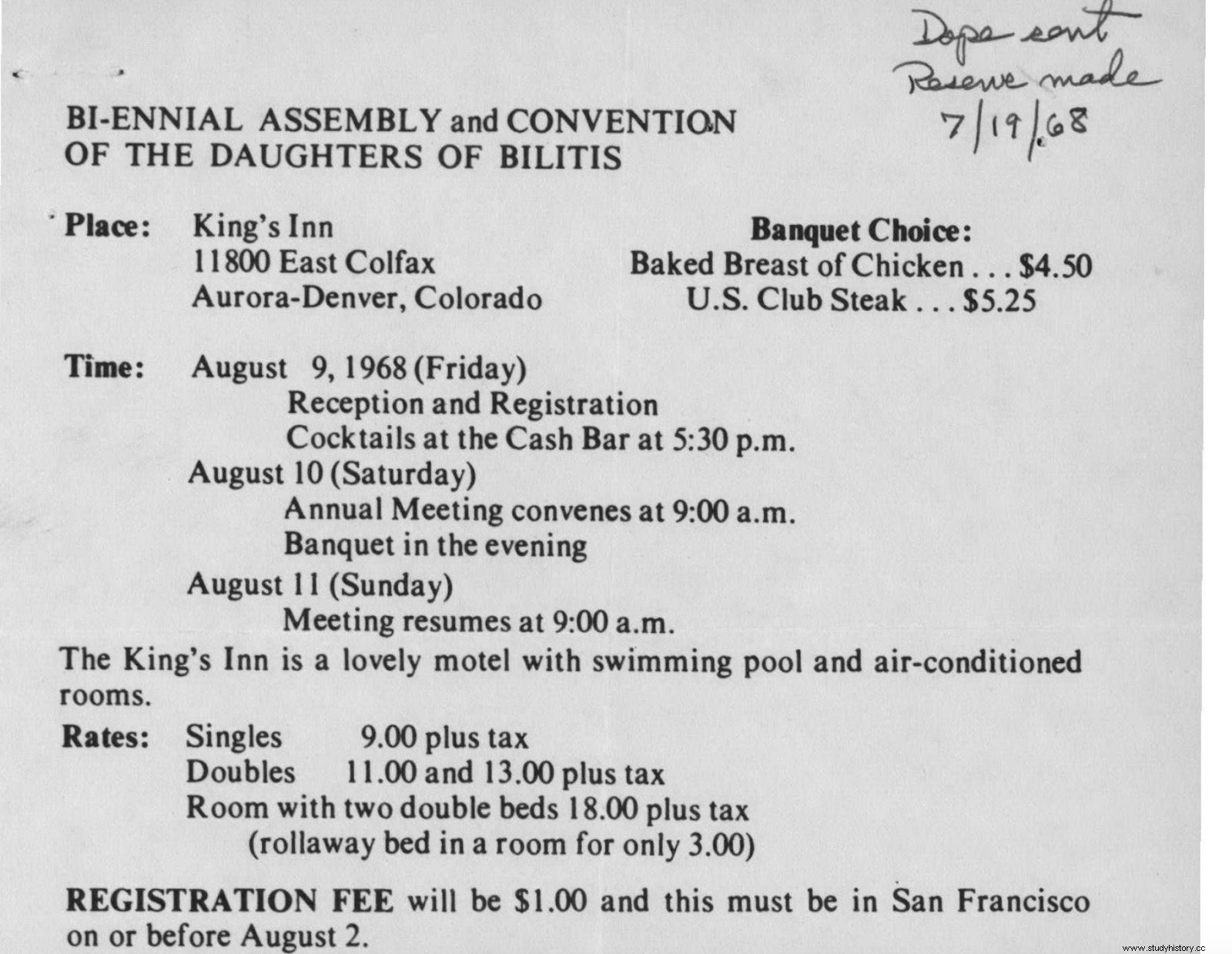
The convention had a number of speakers. There was a debate between two lawyers about the legal and moral aspects of gay bars. The American Civil Liberties Union held a presentation. Even a bishop's pastor attended and spoke at the conference to remind the public that they were all sinners. The 'sinners' just listened politely. The DOB also assigned the men who were their allies and called them Sons of Bilitis or SOBs. Some of the men were lawyers, photographers and Mattachine Society members who helped with the convention.
The second national convention was held in 1962 and was also covered by a nationally syndicated show, KTTV's Confidential File. It is believed to be the first American national broadcast to specifically cover lesbians. Additional DOB conventions were held every two years until 1968.
Changes
In 1960, letters appeared from the readers of Stigen. Readers expressed their irritation over DOB's emphasis on compliance. Martin and Lyon realized that by modern standards, the club's early tactics regarding the integration of lesbians into a heterosexual society were outdated. While many thought DOB's ideals were unrealistic, others thought they were too tame.
In 1961, the biggest attack on one of San Francisco's gay bars resulted in the arrest of 100 people. In another raid in Chicago, the women were forced by the police to undress to prove that they were not wearing underwear for men. These events called the DOB to be more active. To fight back, the women had to break free from the fear that had paralyzed them for so long. At the DOB's second convention in 1962, however, National President Jaye Bell again argued for a pragmatic approach to integration into society.
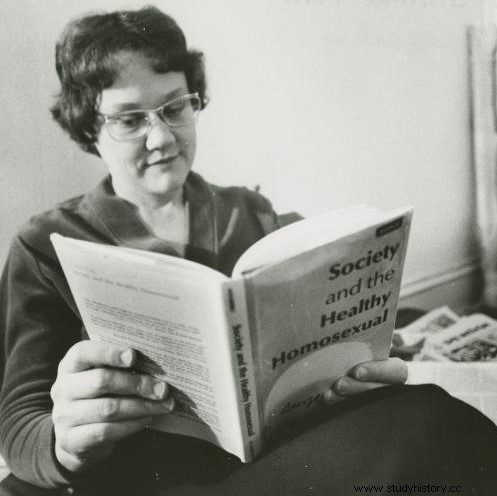
In 1963, two things happened that led to changes in the organization. An anonymous donor, who refused to reveal himself and was only identified as 'Pennsylvania' by the DOB, began donating large sums of money to the organization - $ 100,000 to 3,000 was donated over five years. 'Pennsylvania' would write 1962 USD checks to various members of the DOB, which in turn would sign them to the organization. Barbara Gittings (founder of the New York City chapter in DOB) took over the editorship of The Ladder from Del Martin. The ladder was the primary method that the management of DOB communicated with the other chapters, so the editor was extremely influential. When Gittings became editor, she made a number of significant changes. Visibility was more emphasized. Another of her priorities was to adapt the DOB to the East Coast Homophile Organizations (ECHO), a coalition of other political and social clubs for lesbians and gays. ECHO was formed in January 1962, and during the formative years membership included the chapters of the Mattachine Society of New York and Washington DC, the DOB chapter of New York and the Janus Society (an early gay organization founded in XNUMX, Philadelphia.) ECHO directed towards facilitating cooperation between external administrations and gay organizations.
In 1964, Martin and Lyon began to withdraw from the organization, claiming that the organization's validity could not be verified by two people. It had to grow and stand on its own, and for the organization to do that, the couple felt they had to move out. They joined the Council on Religion and the Homosexual or CRH to develop a dialogue between gays and lesbians and organized religion. Although they encouraged the DOB to join the CRH as well, a previous rule prevented the DOB from doing so. But DOB sometimes collaborated with the organization.
San Franciscos Stonewall
On New Year's Eve 1965, many gay organizations in San Francisco, including CRH, DOB, the Mattachine Society, and the Society for Individual Rights, held a fundraiser at California Hall on Polk Street. Although the city police had agreed not to interfere, they showed up on ball night. They surrounded the hall and lit several candle holders, focusing on the entrance to the hallway. More than 600 people attended the ball, and the police took photographs of each of them. Police cars were parked near the entrance.
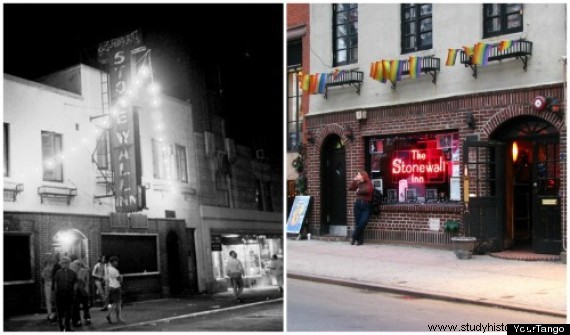
When Evander Smith (the lawyer for the groups that organized the ball, including the DOB) and Herb Donaldson tried to prevent the police from conducting their fourth "inspection" of the ball, they were arrested along with Elliott Leighton and Nancy May. They were two heterosexual lawyers who supported the rights of those who wanted to participate in the ball. Twenty-five of San Francisco's most prominent lawyers joined the defense team for the arrested lawyers. But before the defense had the opportunity to argue when the case came before the court, the jury was instructed by the judge to find the lawyers who were not guilty. Historians call the event San Francisco's Stonewall. The city's most prominent lawyers participated in defending the detainees marked a turning point in heterosexual rights on the west coast of the United States.
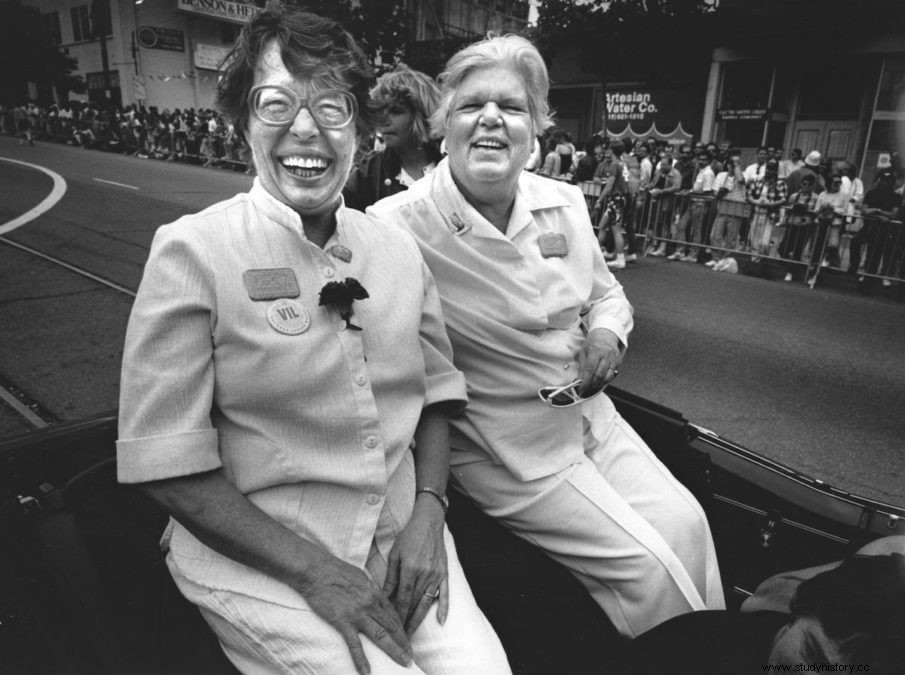
The success of the civil rights movement further affected the gay movement. In 1964, Cleo Bonner, an African-American, was elected president of the DOB. In 1965, Gittings, Martin, and Lyon began picking up the White House, the State Department, and other federal buildings. In 1966, they were joined by members of the Mattachine Society. Gittings played a key role in encouraging others to do the same. Such activism led to a controversy over DOB's leadership. Gittings, as an editor, ran a regular column in The Ladder called 'Living Propaganda'. In the column, she encouraged women to come out to family and friends. It often included the contributions of Franklin Kamenys (American gay rights activist), who called for political action. While some readers reacted positively to this, others were deterred by the political tone. Someone else was angry with a man who suggested to them what to do. The leaders of the DOB disliked Kameny and regretted Gittings who made such decisions for the magazine. She was removed from her position in 1966.
Change times
According to Del Martin, DOB was a feminist organization from the beginning, which focused on women's and lesbian issues. However, it was in the mid - 1960s that feminism became a higher priority for many women in the DOB.
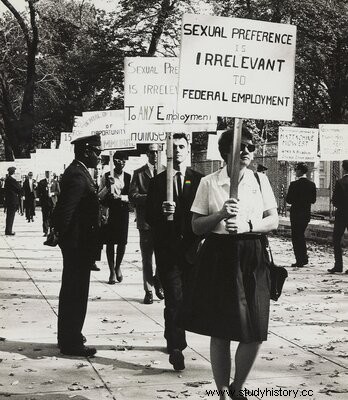
Shirley Willer, president of the DOB in 1966, wrote an essay that pointed out the differences in the problems gay men and lesbians face. Gay men had to deal with police harassment, capture, solicitation and public sex. Lesbians faced other problems - job security and advancement, family relationships, getting custody of their children and visitation rights. Many members of the DOB felt that these issues were not addressed by the organization.
The organization was also affected by changing times. The younger members were easily moved by revolutionary methods and did not share the concerns of the older members. Problems in the organization grew and got worse as individual chapters could not implement measures without seeking approval from the national board. Disillusioned members left and younger members joined feminist organizations. When the 1968 convention was held in Denver, less than 25 women were present.
Falling apart
When Gittings left DOB, Helen Sandoz took over the editing of The Ladder. Editing turned out to be a full-time job and took a toll on the relationship with Sandoz. She was unable to bear the burden, and passed it on to Barbara Grier in 1968. Grier had great ambitions for the magazine. She removed "A Lesbian Review" from the cover, which was placed there by Gittings in 1964. The size of the magazine doubled. Each section was expanded. Much of the space was devoted to feminist ideals.
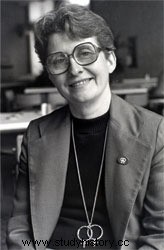
In 1970, to prevent DOB and The Ladder from falling apart, Grier worked with Rita LaPorte (then president) to take the subscriber list from San Francisco headquarters to Reno. This was done to expand the blade. There were only two copies of the list. Although the subscribers were confident that the list would be kept confidential, LaPorte took the list from headquarters without telling anyone other than Grier. Martin, Lyon, Gittings and Sandoz regarded LaPorte's action as theft. Since the list was taken over by state lines, prosecution of the case would become a federal case. DOB did not have the resources to do so. Grier cut ties with the leaders and thereby adopted DOB's primary method of communication with the individual chapters. In 1970, the DOB unfolded as a national organization, although a few local chapters continued until 1995.
Legacy
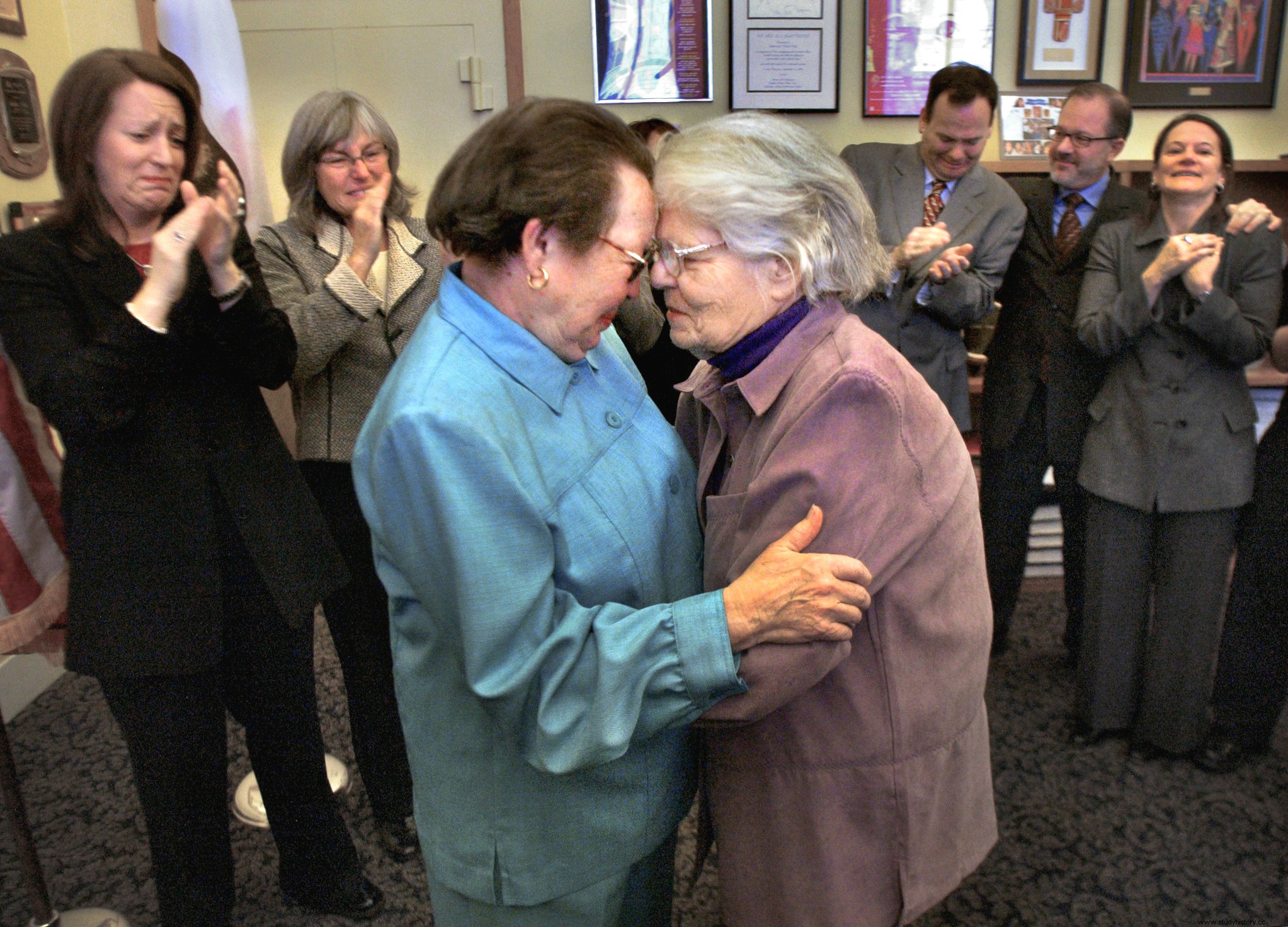
Diliters of Bilitis paved the way for the formation of many lesbian and feminist organizations. What was started as a gay club by Del Martin and Phyllis Lyon succeeded in connecting hundreds of lesbians across the country. Forming the group as a result of police attacks and witch hunts was an act of courage. DOB lasted for 14 years and became an educational resource for gays, lesbians and researchers.
